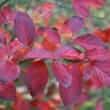Background
- Black haw is a small tree or shrub with oval leaves, pale flowers, and dark blue-black berries.
- Black haw is native to southern North America and has a long history of medicinal use among Native Americans. Traditional uses include the treatment of symptoms and disorders associated with menstruation, pregnancy, and childbirth.
- There is currently not enough human data available to support any use of black haw.
References
Natural Standard developed the above evidence-based information based on a thorough systematic review of the available scientific articles. For comprehensive information about alternative and complementary therapies on the professional level, go to . Selected references are listed below.
- Baldini L, Brambilla G, Parodi S. [Research on the uterine action of viburnum prunifolium.] Arch Ital Sci Farmacol 1964;14:55-63.
View Abstract - Jarboe CH, Zirvi KA, Schmidt CM, et al. 1-methyl 2,3-dibutyl hemimellitate. A novel component of Viburnum prunifolium. J Org Chem 1969;34(12):4202-4203.
View Abstract - Tomassini L, Cometa FM, Foddai S, et al. Iridoid glucosides from viburnum prunifolium. Planta Med 1999;65(2):195.
View Abstract - Xu H, Fabricant DS, Piersen CE, et al. A preliminary RAPD-PCR analysis of Cimicifuga species and other botanicals used for women's health. Phytomedicine 2002;9(8):757-762.
View Abstract







